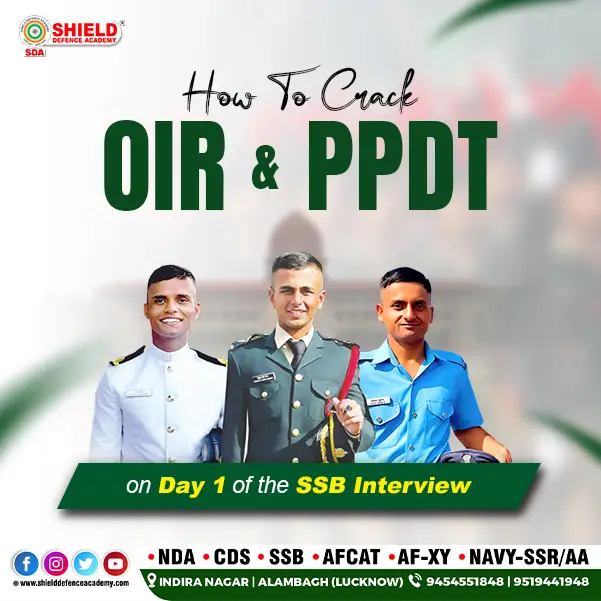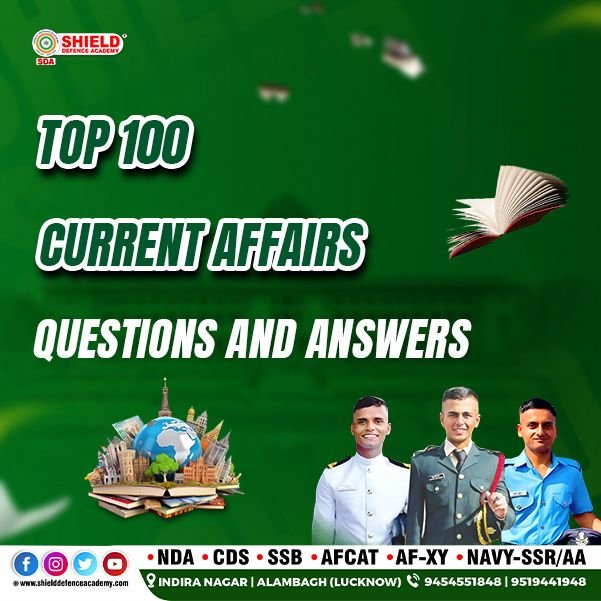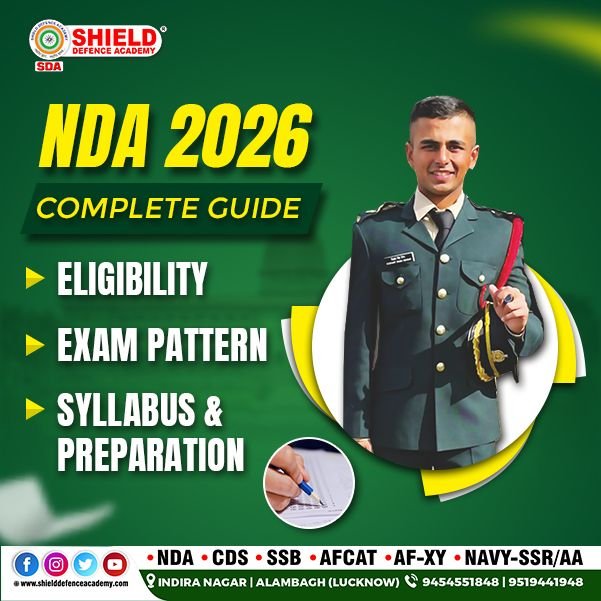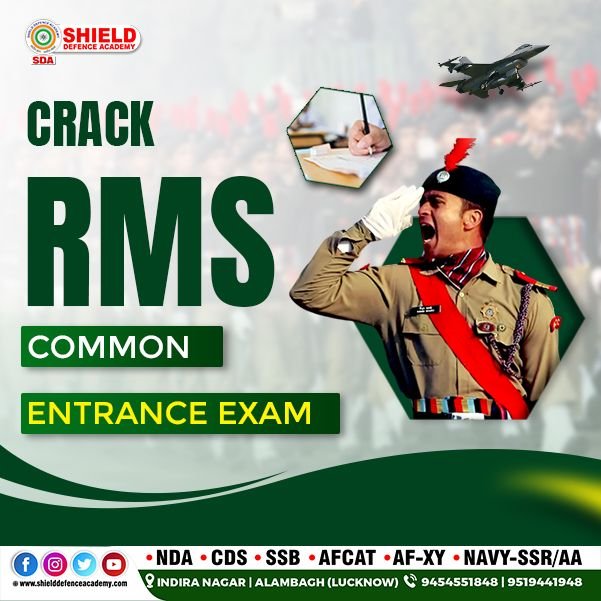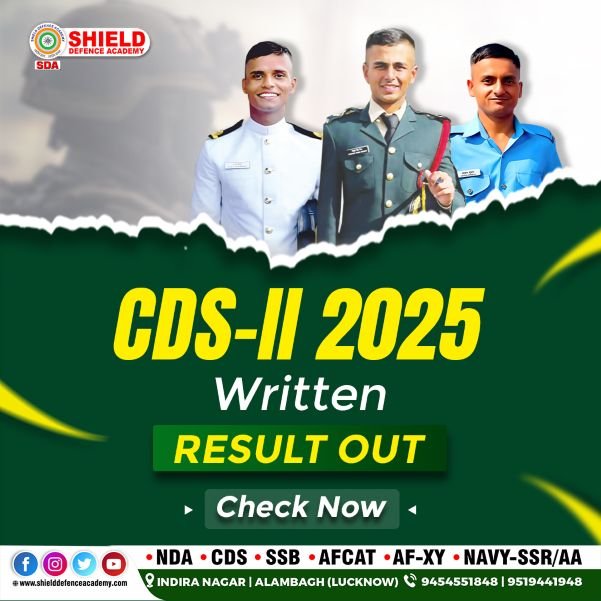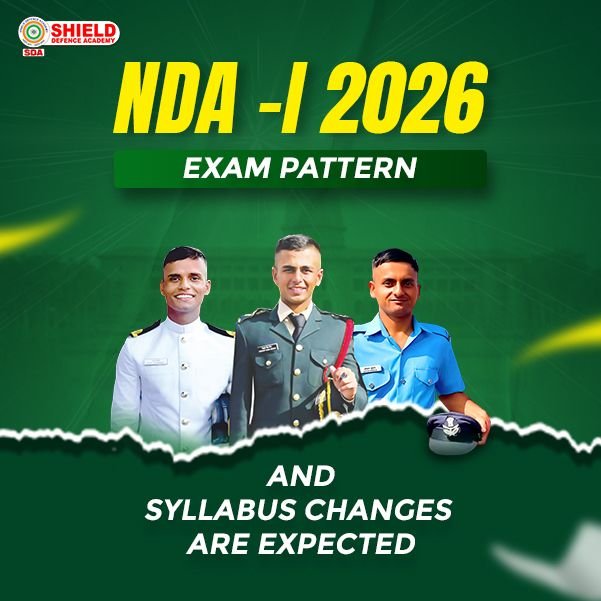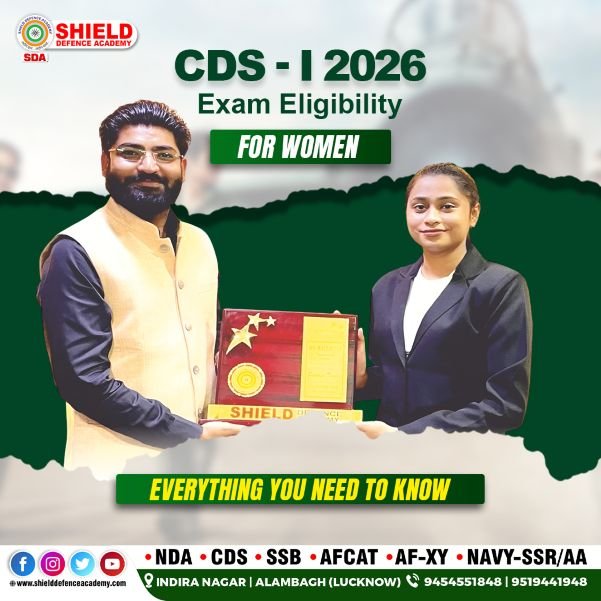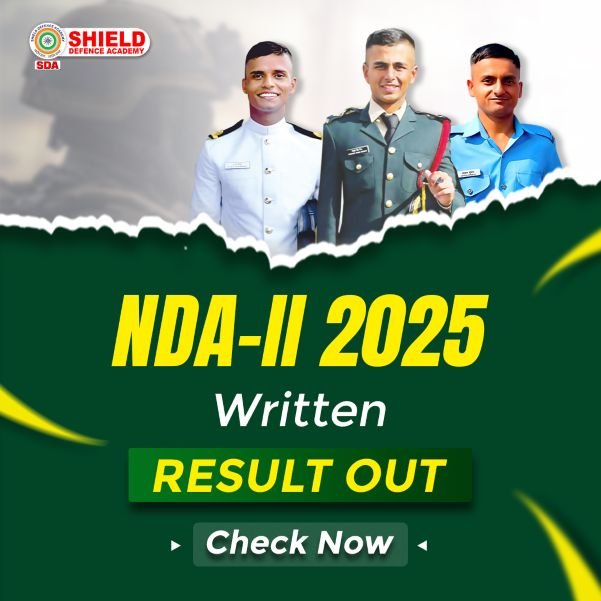If we discuss the Services Selection Board that is SSB interview we get to know it is not just an examination but it is a journey of transformation that truly shapes an individual into a probable leader of the armed forces. In the following five conscientious days of testing, aspirants go with different phases of the test. Day 1 became a very crucial part. The reason is the Screening Stage, it holds the power to decide whether an aspirant will move ahead or return to their home. This difficult day consists of two majorly important tests that are the officer intelligence rating (OIR) and the picture perception and discussion test (PPDT). At Shield Defence Academy the best SSB coaching in lucknow, here we believe that success in the SSB starts with clarity, confidence as well as preparation to get the details. Let’s understand how to crack the OIR and PPDT with accuracy and purpose.
Let’s get a clearing Understanding of the Screening Stage
Day 1 of the SSB is known as the screening test. The main purpose is to filter candidates who really possess the essential qualities of an officer . Things are required like quick thinking, clear communication and effective teamwork. Only those who perform well in the OIR and PPDT proceed to the next stages of testing psychology, GTO and personal interview. Therefore, the first day is not about perfection, it is about potential. It is your opportunity to make a strong first impression.
Information regarding Officer Intelligence Rating Test
What is the OIR Test?
The OIR Test is a written assessment which is designed to evaluate the verbal and non verbal reasoning ability of the candidate. It determines intelligence, comprehension and logical problem solving qualities an officer that must denote in dynamic situations. You will face two booklets containing 40 to 50 questions each and the candidates are allowed to solve it within 15 to 20 minutes per set. The questions are simple, but the time limit is very strict which tests both accuracy and speed of the candidate.
Types of OIR Questions are following
- Verbal reasoning
- Series completion including numbers, alphabets
- Coding decoding
- Analogy and classification
- Antonyms and synonyms
- Arithmetic problems
- Jumbled words or sentences
Non-Verbal reasoning are including
- Pattern recognition
- Mirror and water images
- Embedded figures
- Series and analogy
- Odd one out
- Cube and dice problems
Tips to excel in OIR By Shield Defence Academy focus on Understanding Concepts, not Memorization
If you want to excel in your OIR you have to focus on understanding patterns and logic instead of rote learning. Our trainers at Shield Defence Academy we majorly emphasize on the concept clarity through practice based sessions which help aspirants to explore and excel. Here we are giving some tips to
Practice Regularly with Timed Tests
Set a timer and solve OIR practice sets daily. This builds speed with accuracy, crucial for real time performance.
Learn Shortcut Methods
Techniques like elimination, approximation and pattern identification can save valuable seconds per question.
Don’t Panic Under Time Pressure
Attempt questions you are sure about first then move to tricky ones it will help you to score good. Remember, accuracy carries more weight than the number of attempts.
Mock Tests and Analysis
At Shield Defence Academy, aspirants are given OIR simulation tests that mirror the real SSB environment. Post test discussions help identify weak areas.
Tips to Score Good in OIR
Each candidate receives an OIR Grade 1 to 5, where
- Grade 1 = Outstanding
- Grade 5 = Below Average
Your OIR grade directly affects your overall screening result when combined with PPDT performance. Even if your PPDT is decent and you have a good command of it , on the other hand a poor OIR score can pull you down and it goes vice versa. Strive for Grade 1 or 2 to ensure a competitive edge.
Part 2- Picture perception & discussion test PPDT
What is PPDT?
After the OIR test, candidates face the PPDT, which assesses observation, imagination, communication and group behavior. A hazy picture is shown for 30 seconds, followed by
- 1 minute to note key details , age, sex, mood etc.
- 4 minutes to write your story
- Group discussion to narrate and finalize a common story
- This stage tests not just your perception, but your leadership and interpersonal skills.
The PPDT Process Explained
Picture Observation
Observe the image keenly, note the background, characters, actions, and emotions. Don’t assume unrealistic events focus on being practical.
Story Writing
In 4 minutes, craft a meaningful story reflecting initiative and problem solving. Focus on a positive theme where your main character (hero) displays officer-like qualities of confidence, responsibility and teamwork.
Narration
When it is called for narration it plays a crucial role to upgrade your rank. Always try to narrate your story confidently within 45- 60 seconds because managing time is very important in this process. Maintain eye contact, use a clear voice and avoid reading from the sheet and major focus of narration.
Group Discussion
You will be grouped with 12–15 candidates. This phase judges your ability to express ideas, listen to others, and lead respectfully. The group must come to a consensus on a common story.
How to Write an Effective PPDT Story
At Shield Defence Academy, mentors teach aspirants the SEE formula simple, Effective and Engaging.
- Simple
Don’t overcomplicate the plot. Base your story on a realistic situation like community service, disaster rescue, or social initiative.
- Effective
Show your main character identifying a problem and taking initiative to solve it with teamwork and planning.
- Engaging
Always focus to ensure your story has a clear beginning with the situation, in the middle go with action and end up with a positive outcome.
Example
The picture shows a young man with tools near a damaged bridge. Ramesh, a civil engineer trainee, noticed that local villagers faced difficulty crossing after heavy rains. He gathered volunteers, arranged repair material from authorities, and rebuilt the bridge ensuring safety. His leadership and teamwork brought relief to the entire village. This kind of story reflects initiative, responsibility and planning core officer qualities.
Tips for the Discussion Round
- Be the First, but Not Forceful
- Start early in the discussion to show confidence, but don’t dominate. Balance initiative with teamwork.
Maintain Positive Body Language
Sit straight, listen actively and smile when others speak. Avoid unnecessary gestures or arguments.
Value Others Opinions
Agree where needed and bring the group to a logical conclusion. This shows maturity and leadership.
Control Your Tone
Calm, assertive communication creates a lasting impression on assessors.
Lead with Logic
If the group becomes noisy, use logic and structure to guide them back to the topic that’s what real leaders do.
How Shield Defence Academy Prepares You for OIR & PPDT
At Shield Defence Academy, we believe that the right preparation starts with the right mindset. The structured approach focuses on personality development, skill enhancement and practical exposure.
Real-Time Simulation Practice
Students undergo multiple OIR mock tests and PPDT sessions that replicate actual SSB conditions. This builds comfort with the real test environment and reduces stage fear.
Individual Feedback and Guidance
Every candidate gets full opportunities and receives personal feedback from experienced ex defence officers and mentors who have served on SSB panels. This helps aspirants improve storytelling, communication and body language.
Group Interaction Training
Group activities like debates, discussions and leadership games are conducted to enhance confidence and cooperation, the very essence of PPDT success.
Personality Development Sessions
Through communication workshops and psychological conditioning, Shield Defence Academy nurtures the traits of responsibility, initiative and positive attitude.
